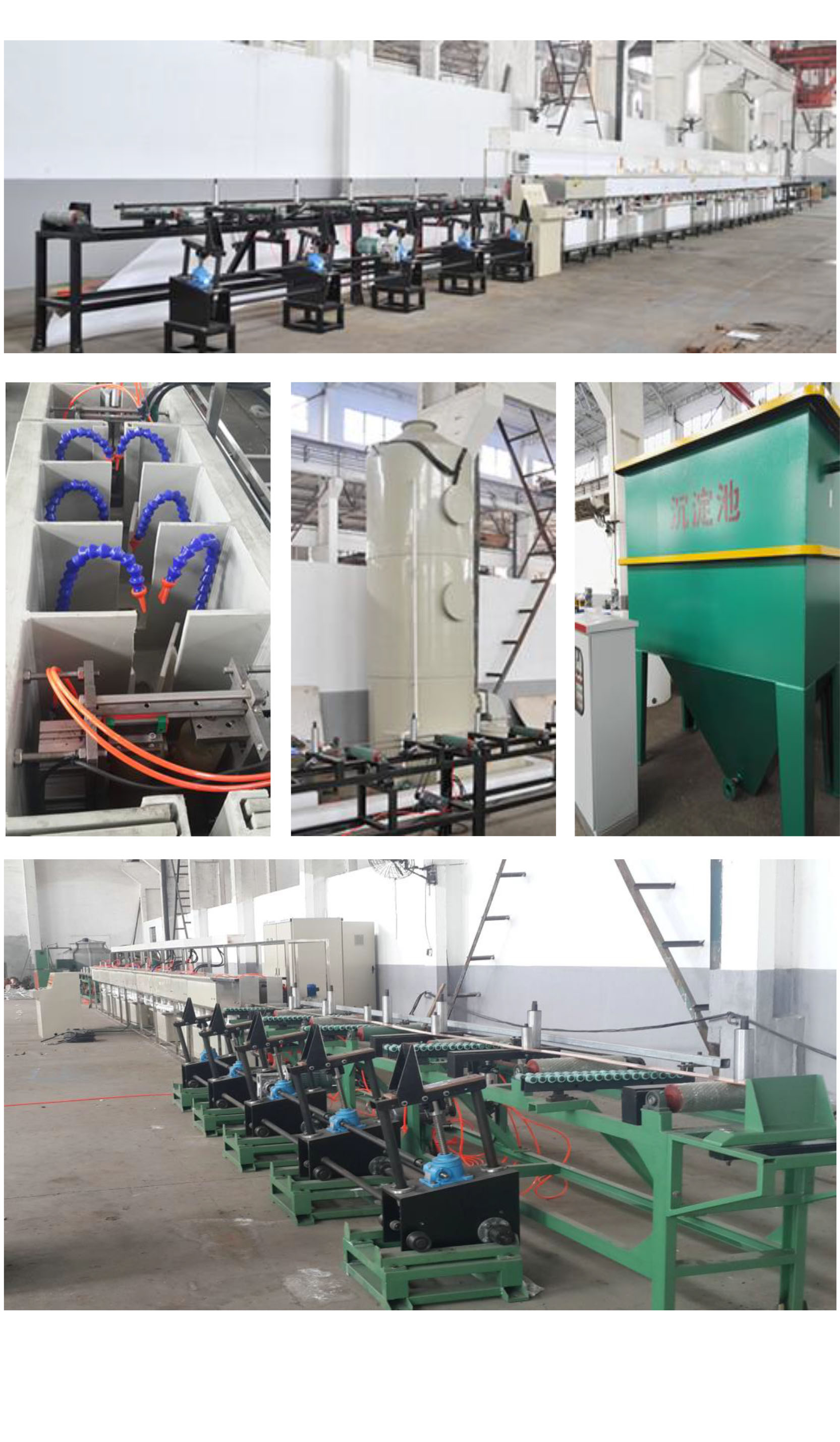
Negócio
 Liberte o TIME:2019-04-02
Liberte o TIME:2019-04-02
1. Descrição:
A linha de galvanização automática W150 é composta por parte mecânica e parte de galvanização. Esta linha funciona em uma condição fechada: a água no processo de limpeza pode ser reciclada e o gás residual pode ser coletado e tratado. Comparado com o antigo processo, não há emissão de água e gás residual. Devido ao processo de movimento contínuo, o revestimento da superfície é brilhante e uniforme. Através do processo de galvanização, a condutividade e a antioxidação das chapas de cobre foram aumentadas.
2. Parâmetro técnico:
|
No |
Item |
QTY |
|
1 |
Tipo |
W150 |
|
2 |
Faixa de largura da barra de cobre |
30-150mm |
|
3 |
Faixa de espessura da barra de cobre |
1- 25 mm |
|
4 |
Velocidade de produção |
1.3-3m /min |
|
5 |
Poder total |
Sobre 50Kw |
3. Lista de suprimentos
|
No |
Item |
QTY |
Observação |
|
1 |
Busbar feeding rack |
1 set |
|
|
2 |
Conductive rinsing and cleaning section |
2 pcs |
|
|
3 |
Antioxidation cleaning section |
2pcs |
|
|
4 |
Tin plating section |
3 pcs |
Include water chiller |
|
5 |
Cleaning after plating |
1 pc |
|
|
6 |
Warm water cleaning section |
1 pc |
|
|
7 |
Hot wind drying section |
1 pc |
|
|
8 |
Take up and overturn rack |
1 set |
|
|
9 |
Electric control system |
1 set |
|
|
10 |
Waste gas collecting and cleaning tower |
1 set |
|
|
11 |
Waste water purify treatment device |
1 set |
|
4. Description to main components:
4.1 Copper busbar feeding rack:
Put the bright bubar horizontally on the feeding rack; the rack can automatical turn over the busar to vertical stacus and send it to the cleaning channel by feeding rollers.
4.2 Conductive flush cleaning section:
After receiving the signal, the hauling device will clamp the busbar and the conductive wheels will contact the busbar. During this section, the busbar will go through the electrolytic degreasing and oil removing process process.
4.3 Antioxidation cleaning section:
Antioxidation cleaning process is the last cleaning paragraph before the tin plating.
4.4 Tin plating section:
Tin plating section is divided into three parts, which can ensure the busbar get the uniform plating effect and plating thickness.
4.5 Cleaning after plating:
This process is to clean the residual acid at the busbar's surface
4.6 Warm water cleaning section:
This process is for the further cleaning
4.7 Hot wind drying section:
In order to clean the residual water on the busbar surface after cleaning, the hot wind drying is adopted to remove the water.
4.8 Take up and overturn rack:
After the tin plating, the vertical busbars pass the coveying roller rail, then turn to the horizontal status and slip into the stacking device through rubber wheels. In order to avoid the scratch, the sliping distance can be adjusted.
4.9 Electric control system:
The system consists of 1 main control cabinet and 2 consoles. The control system is divided into plating part and mechanical part.
Each section of plating part is equipped with hauling
device, which receive the signal through photoelectric sensor and carry out the
hauling action.
The worker can set the voltage and current in the control cabinet.
4.10 Waste gas collecting and cleaning tower:
After the heating, the acid in the tin plating tanks will generate a small amount of acid mist. In order to reduce the air pollution, the waste gas will be collected and sent to cleaing towen for purification.
4.11 Waste water purify
treatment device:
There is a small
amount of waste water in the cleaning cycle of tin plating production. The
waste water can be neutralized and filtered by purifying device to reach the
standard of reuse water.
5. The
requirements of production line
1. User should prepare a control switch box and power cord used for connect the control switch box to the main control cabinet of the equipment.
2. Water requirement: soft water 2t
3. Auxiliary materials: we provide the list
4. Workshop requirement: 45m*6m*4m (L*W*H)
6. Reference
